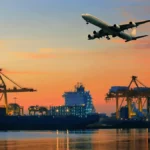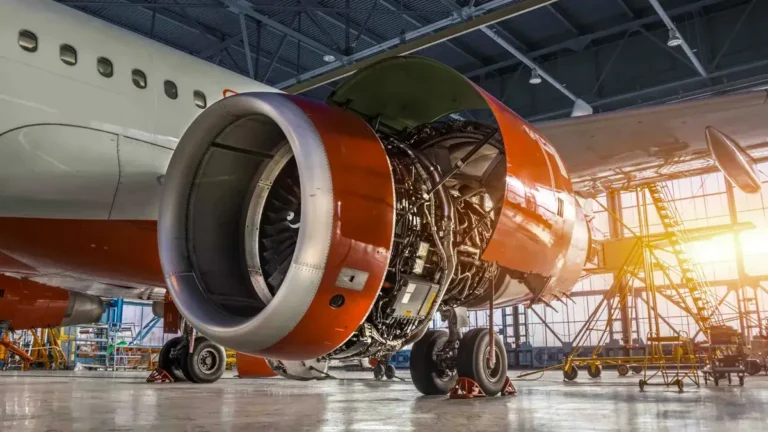Every international shipment has one unavoidable step: customs clearance. It’s where paperwork meets policy — and where many delays, fines, or cargo seizures happen. Whether you’re shipping electronics to Europe or importing textiles into Thailand, understanding the customs process is crucial. This guide walks you through what you need to know, common mistakes to avoid, and how Roadmap Logistics can help make the process smooth.
What Is Customs Clearance?

Customs clearance is the legal process of moving goods across borders. It involves verifying your cargo, declaring its contents and value, and ensuring all duties and regulations are satisfied. Each country has its own rules, but the basic idea is the same: make sure the goods are safe, legal, and taxed appropriately before they enter or leave the country.
If you’re new to global shipping, read our freight services overview to understand your shipping options.
Essential Documents

Missing or incorrect paperwork is the number one cause of customs delays. Here are the documents you’ll typically need:
- Commercial Invoice – Lists buyer, seller, and value of goods.
- Packing List – Itemizes what’s inside each container or package.
- Bill of Lading / Airway Bill – Proof of cargo ownership and transport.
- HS Codes – Identifies goods using a global classification system.
- Certificate of Origin – Shows where the goods were made.
- Import/Export Permits – Required for restricted or controlled goods.
These documents prove the legality, origin, and taxable value of your shipment. For detailed help with documents, contact our Roadmap Logistics team.
What Information Is Required for Customs Clearance?

To clear customs, authorities need complete details about your shipment. Below is a global comparison of what’s typically required:
| Country | Key Information Required |
|---|---|
| Thailand | HS Code, Import License, Value of Goods, Origin, Destination, Cargo Type |
| USA | Importer Number, HTS Code, POA (if brokered), Invoice & Quantity Details |
| Germany/EU | EORI Number, HS Code, Customs Value, Certificate of Conformity |
| China | Importer Registration, Contract Terms, CIF Value, CIQ if required |
| United Arab Emirates | Importer Code, Product Description, Value, Port of Entry |
Each country has its quirks, but all need accurate codes, declared value, and identification of sender/receiver.
What Is the Customs Clearance Process?

Here’s a side-by-side look at how customs clearance works in different countries:
| Location | Steps to Clear Customs |
|---|---|
| Thailand | e-Customs registration, HS code classification, permit check, document submission, duty payment, inspection |
| United States | File entry with CBP via ACE, submit documents, pay duties/taxes, inspection, cargo release |
| Germany/EU | Register EORI, classify goods, submit declaration, pay duties/VAT, possible inspection |
| China | Submit declaration, pay duties/VAT, CIQ inspection, batch check, cargo release |
| United Arab Emirates | Register importer code with UAE Customs, submit declaration via Dubai Trade, pay duties/VAT, inspection, release |
For Thailand, the process looks like this:
- Register for e-Customs – You need a digital certificate or a licensed agent.
- Classify goods – Assign the correct HS Code and check for import permits.
- Submit documents electronically – Includes invoice, packing list, permits, etc.
- Pay duties and taxes – Based on CIF value and tariff classification.
- Inspection and release – Goods are flagged as green (no inspection) or red (manual check).
If you want to know more about international shipping routes and how this process fits in, read our Asia to Europe freight guide.
How to Do Customs Clearance in Thailand

Thailand’s customs process is digital, but still complex. Here’s how it compares to other major shipping countries:
| Location | Key Documents Required |
|---|---|
| Thailand | Import Declaration, Bill of Lading, Commercial Invoice, Packing List, Import License, Certificate of Origin |
| United States | Bill of Lading, Commercial Invoice, Packing List, Customs Bond, Entry Forms, Permits |
| Germany/EU | Customs declaration, Commercial Invoice, Packing List, Bill of Lading, Certificate of Origin, Licenses |
| China | Commercial Invoice, Bill of Lading, Packing List, Contract, Insurance, CIQ forms, Certificate of Origin |
| United Arab Emirates | Bill of Lading, Commercial Invoice, Packing List, Certificate of Origin, Import/Export Permit if required |
The key takeaway: while Thailand allows for e-submission, you must be precise. Errors in HS codes or missing licenses can stall your shipment.
What Is Included in Customs Clearance?

Customs clearance usually covers:
- Document review
- Import/export permits
- Tax and duty calculation
- Risk assessment (for inspection)
- Physical cargo inspection (if flagged)
- Final cargo release
Some freight forwarders, like us at Roadmap Logistics, also include submission on your behalf and work with licensed customs brokers. You can read more about our freight solutions here.
Common Mistakes to Avoid

Delays, penalties, and even cargo seizure can result from basic mistakes. Avoid these:
- Incorrect HS codes (most common issue)
- Incomplete invoices or packing lists
- Declaring wrong values
- Failing to check if your cargo is restricted
- Missing import permits for medical, food, or tech goods
At Roadmap Logistics, we help you catch these errors early. Learn how on our About page.
Clearance Costs to Expect

Customs fees vary by country, cargo, and shipment value. Common charges include:
- Duties and Taxes – Based on HS code and declared value.
- Broker Fees – If you use a licensed customs broker.
- Inspection Fees – If cargo is flagged for physical review.
- Storage / Port Fees – If your shipment is delayed.
Every delay adds cost. That’s why working with a reliable logistics partner can save both time and money. To get an accurate quote, contact us.
How We Help at Roadmap Logistics

At Roadmap Logistics, we make customs clearance simple:
- We prepare and submit all customs documents
- Partner with licensed brokers globally
- Monitor your shipment through every clearance step
- Keep you updated and avoid costly delays
If you’re importing or exporting from Thailand, we’re your customs partner. Explore our full list of freight services.
FAQ: Customs Clearance
Q1: What is an HS code?
It’s a global product classification system. It determines how much duty you pay. Even small errors can result in fines or shipment holds.
Q2: Do I need a customs broker?
Not always. But if your shipment is complex or high-value, we recommend it — and can handle the process for you.
Q3: Can customs hold my shipment?
Yes. Common reasons include missing documents, incorrect HS codes, and undeclared restricted items.
Q4: Is customs clearance needed for every shipment?
Yes — unless the cargo is domestic. International shipments always pass through customs.
Q5: How long does clearance take in Thailand?
Green line shipments may clear same-day. Red line inspections can take 1–3 days or more depending on the issue.
Let’s Take the Stress Out of Customs
You focus on your business — we’ll handle the customs red tape. Get in touch and see how simple shipping can be.
Visit roadmaplogistics.co.th to get started.








